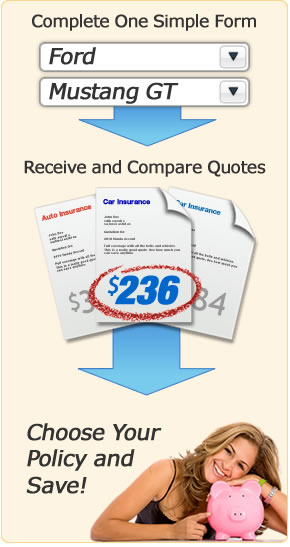
Three Steps to Cheaper Porsche Cayenne Insurance
If shopping for auto insurance was more enjoyable, it would get done more often. But more than likely, it's challenging for most people and we always end up paying more than we want. Buying insurance on your Porsche Cayenne might leave you feeling the same way.
Step One: Compare Rates
The old way of buying car insurance was to make multiple trips to various local agents and get strong armed into a policy that didn't necessarily fit you. But now you can eliminate that hassle and buy online!
Comparing insurance rates for a Porsche Cayenne only require you to enter your information once. You'll receive multiple quotes and can easily compare rates.
To compare rates now, have your current policy handy (if you have one) and click the link below. Complete the short form and move on to step two.
Apples-to-Apples! When doing comparison quotes for your Cayenne, it's very important that you use the same liability limits and physical damage deductibles on each quote. Otherwise you will not be able to accurately determine which company has the lowest rates.
Step Two: How to Cut Costs on Cayenne Insurance
Now that you have several rates to compare (since you did compare rates above, right?), we will now show you some additional ways you can lower your Cayenne insurance rates.
- You can definitely expect to pay a little more for insurance due to the performance level of your Porsche Cayenne. Vehicles with less power and speed tend to cost less to insure.
- Being a senior citizen can qualify you for a small discount on your insurance rates. Older drivers are generally more cautious so they get a lower rate.
- Cayenne replacement parts are more expensive due to the quality of the parts, so you can expect your physical damage rates to be higher to reflect the higher cost of repair.
- If you're willing to shoulder more of the cost at claim time, consider raising your comprehensive and collision deductibles. This can easily cut 30% or more from your policy premium.
- If you have any teenage drivers in your household, expect to fork out quite a bit more for insurance. Rating them on a low profile vehicle with liability only coverage is the best way to save money.
- Minor driving violations such as speeding tickets can cause your rates to go up. Too many violations in a short period of time will cause your policy to be non-renewed.
- If your vehicle comes with safety features such as electronic stability control, head restraints, all-wheel drive or air bags, these all help keep insurance costs down by helping reduce accident injuries.
- Filing too many claims with your company can end up either costing you more for insurance or having your policy cancelled. Insurance companies don't like paying any more than you do, but they have the option of whether to keep you as a policyholder or not.
- If you car makes the top ten list of most stolen cars, you might be paying a little extra to insure it.
- If you're not sure what your credit rating is, check it now. Car insurance companies use your credit score to determine the rates you pay, so the better your credit, the less you will pay.
- The time it takes to complete a driver's safety training course could be time well spent. It could save you up to 10% off your car insurance rates.
- If you have a period where you don't have any insurance coverage, that's called a lapse. The longer the lapse, the more you'll pay to reinstate coverage.
- If you rent rather than own a home, you may be paying more for car insurance. Homeowners often get lower rates.

Step Three: Make an Informed Buying Decision
You've compared rates and hopefully looked over the coverages for each vehicle on your policy to make sure they're adequate. Now you can make the big decision on which company will best fulfill your needs.
On your new policy, double check that the effective date is the same as the date you are cancelling your old policy. This avoids any lapse in coverage which can cause an increase in your rates.
Any time you buy a new vehicle, make sure you have car insurance in place, either from an existing policy or a new policy that you purchase from the dealership floor. Your existing car insurance policy will give you some coverage if you buy a new or used Cayenne, but unless you are already paying for full coverage, you won't have it until you add the vehicle to your policy.
All states require you to keep the proof-of-insurance or financial responsibility card in your vehicle at all times. Failure to produce this document can result in a citation. Depending on your state's statutes, you may be required to file an SR-22 form if you've been convicted of an uninsured accident, DUI or license suspension. Make sure your new company is aware of this requirement and files it promptly.
More Educational Resources
For more information on car insurance topics like the claims process, rental car insurance and how much coverage you need, visit the Insurance Information Institute website.

